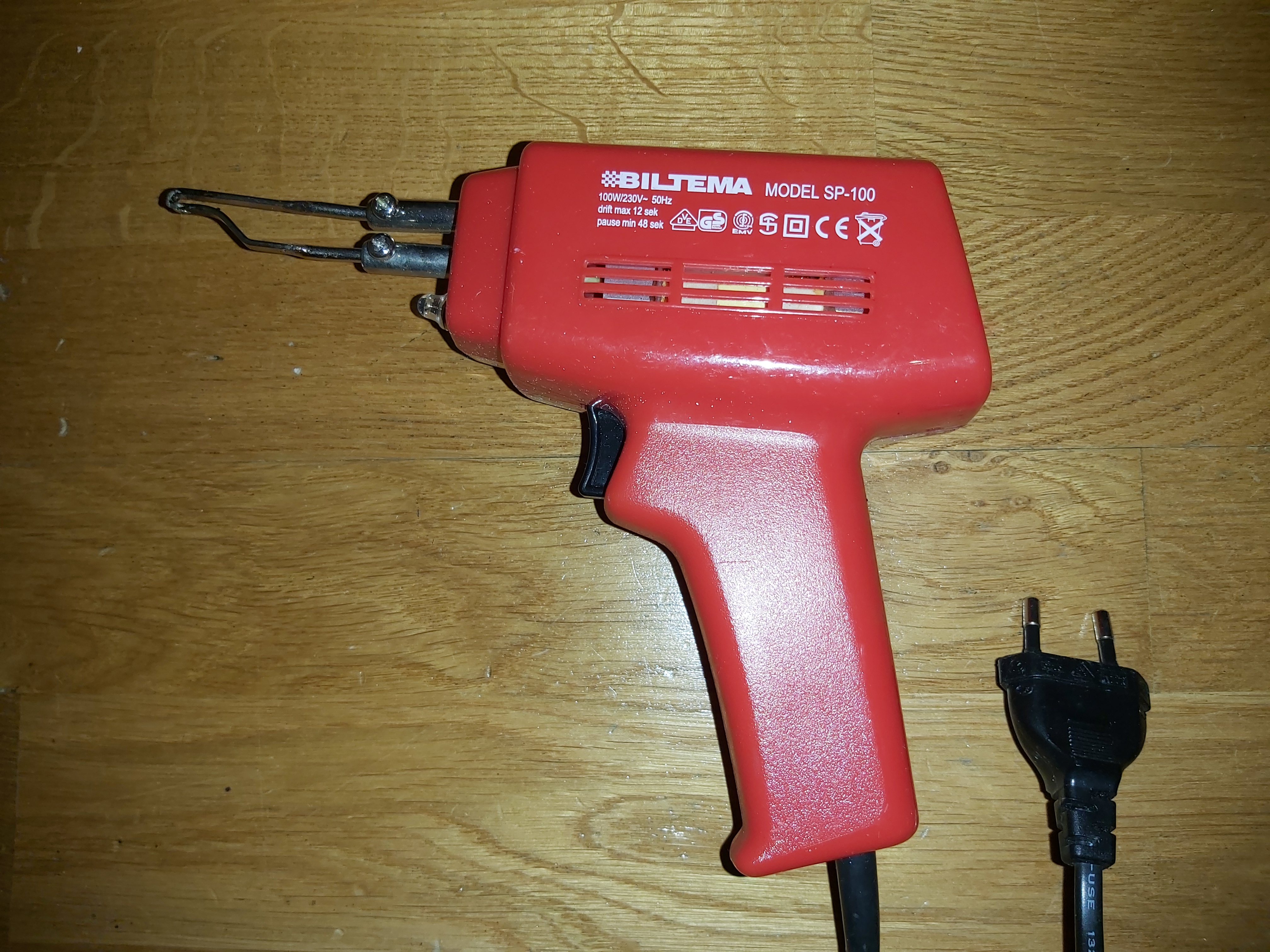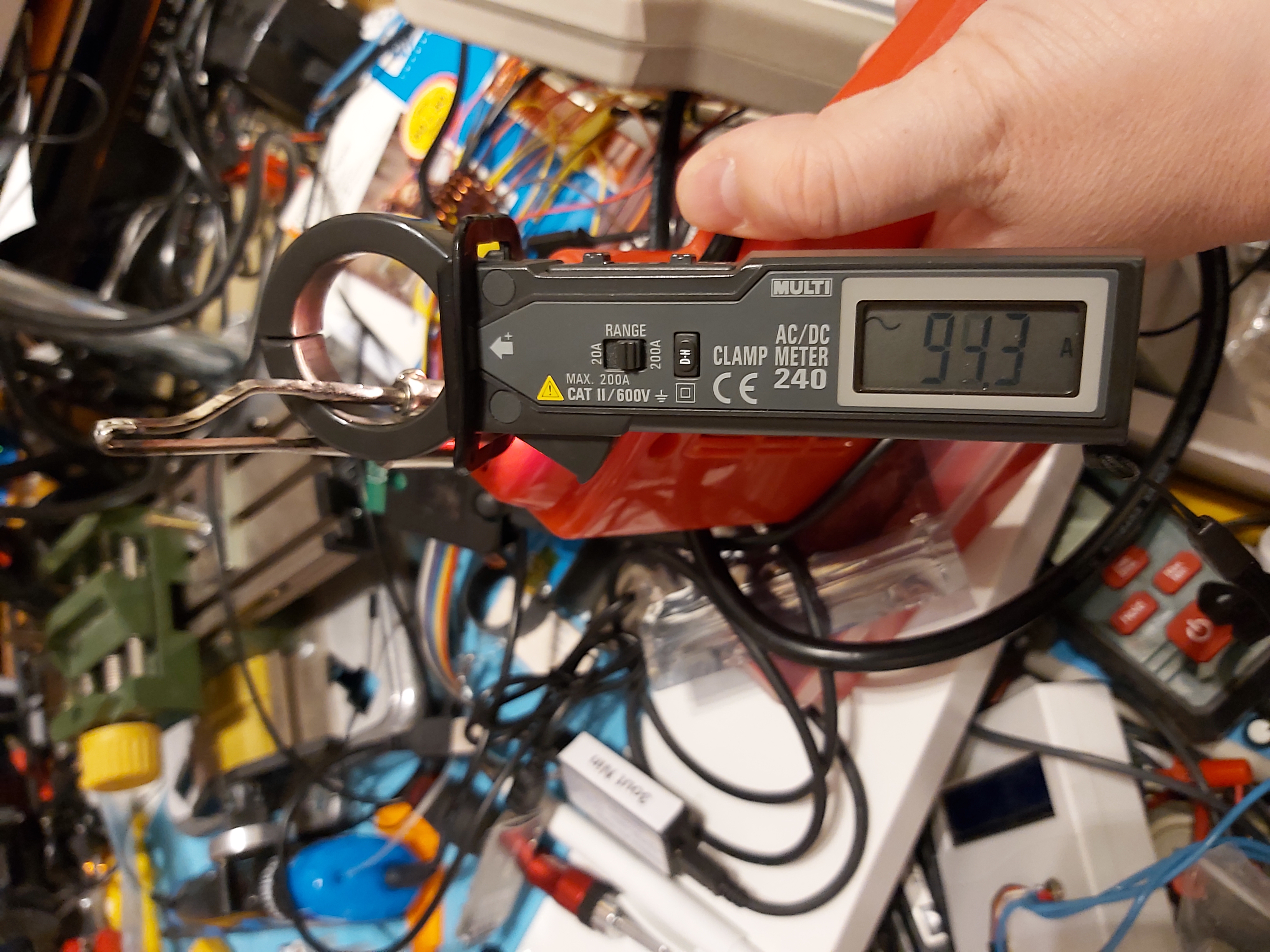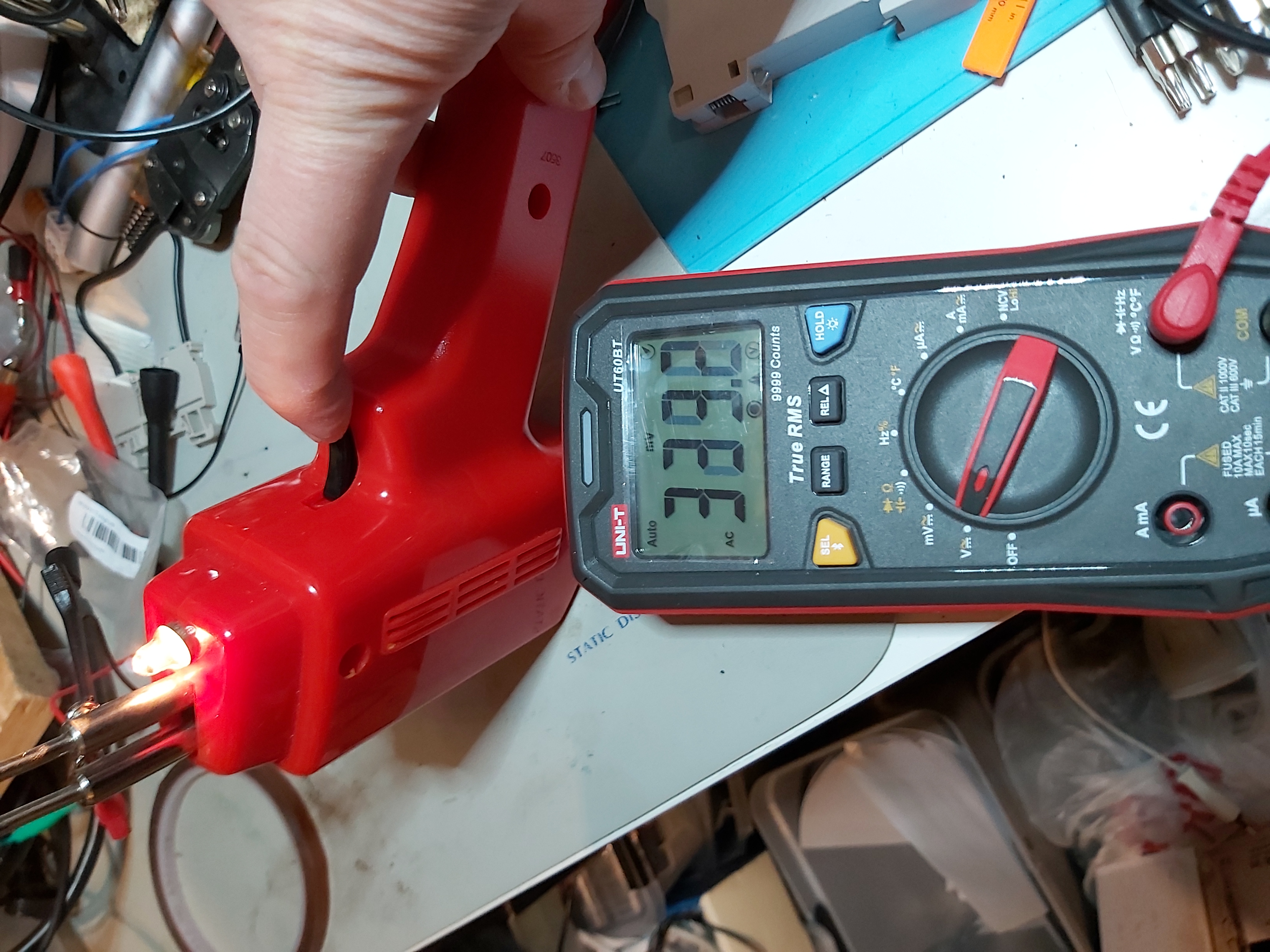A soldering gun is an approximately pistol-shaped, electrically powered tool for soldering metals using tin-based solder to achieve a strong mechanical bond with good electrical contact. The tool has a trigger-style switch so it can be easily operated with one hand. Soldering guns are often used where more heat is needed than from the lower-power smaller soldering irons. Solder guns can be used for heavy electrical connections, stained glass assembly, and light sheet-metal work.
Soldering guns feature more power than soldering irons, typically between 75 watts up to 300 watts for industrial use. The pistol shape provides more control in cramped work areas. Soldering guns use transformers to convert power to a low-voltage current to heat up the loop-shaped tip. The temperature of the soldering tip is regulated manually by holding the button until the solder melts, and then releasing it. When the solder is about to start solidifying, the button is pressed again, and so on.
Pistol-grip electrically-heated soldering tools had been used since the 1920s. In 1941 Carl E. Weller invented and later obtained U.S. patent 2,405,866 for a transformer-based soldering tool which heated and cooled rapidly.
In a Facebook posting at https://www.facebook.com/share/r/GtYhqGWTkDC1ezae/ there was an interesting video reel mentioned with comments:
https://www.facebook.com/reel/3218593264944072
This is interesting….. Anyone know what is the typical AC amperes flowing in a soldering gun secondary, solder tip? Say, 120 watts?
Or, has anyone measured the AC voltage across the heavy screw terminal output clamps of the gun, at the resistive loop terminals?
Then, in this app, is the modified solid copper wire coil coupling AC secondary power to the metal crucible, inductively? Or simply ohmic-ly Through the coil’s contact with the solder cup, and driven by the
low voltage, high current solder gun secondary?
Nice quick solution for a solder cup.
Here are some of my comments to it:
This is interesting….. Anyone know what is the typical AC amperes flowing in a soldering gun secondary, solder tip? Say, 120 watts?
I have one 100W Biltema brand soldering gun. The current flowing in original it is around 80-90 amperes.
Or, has anyone measured the AC voltage across the heavy screw terminal output clamps of the gun, at the resistive loop terminals?
I measured voltage of around 350 mV AC when the original soldering tip is in place. The open circuit voltage without tip was around 560 mV AC.
Based on those numbers the actual heating power on the tip is closer to 30W than advertised 100W. The iron seems to take around 95W power from 230V mains outlet.
Then, in this app, is the modified solid copper wire coil coupling AC secondary power to the metal crucible, inductively?
This few turns coil does not give much inductive heating effect at 50 Hz.
Or simply ohmic-ly Through the coil’s contact with the solder cup, and driven by the
low voltage, high current solder gun secondary?
That would be the main heat source.
Anyway an interesting soldering cup hack idea. It might not be suitable for a long working time. This soldering iron says operating cycle to be 12 seconds maximum drift time followed by 48 seconds pause.
More soldering guns ideas:
Free Replacement Tip for Soldering Guns
https://www.instructables.com/Free-Replacement-Tip-for-Soldering-Guns/
Homeade Weller soldering gun tips DIY
https://www.youtube.com/watch?v=U86GsflNjJQ
Home Made Weller Tips Cheaper and Better than Original
https://www.youtube.com/watch?v=DS4plN51Deg
Tech Tips Tuesday, Super Hot Soldering Gun
https://www.youtube.com/watch?v=79uD6XwBg5E
5 Amazing Soldering Iron Gun Tips – Life Hacks
https://www.youtube.com/watch?v=vU9Avha4oRk




6 Comments
Tomi Engdahl says:
I used a small size 200A clamp current meter clamped over one wire in the the original tip to get current readings. I used UT60BT multimeter to measure voltage. The mains power consumption was measured with HOPI meter.
Tomi Engdahl says:
Same brand current model of this soldering gun
https://www.biltema.fi/tyokalut/juottaminen/juotoskynat/juotossarja-2000018530
Tomi Engdahl says:
There is a transformer inside this thing that converts 230V low current to high current and low voltage.
Tomi Engdahl says:
About the HOPI meter
https://www.epanorama.net/newepa/2023/06/07/hopi-meter-power-consumption-analyzer/
Tomi Engdahl says:
They have been useful for soldering some bigger wires, some bigger connectors and some sheet metal works.
There are then also some non traditional “hack” uses for them.
Tomi Engdahl says:
https://hackaday.com/2024/04/20/let-the-solder-scroll-take-care-of-your-feed-needs/